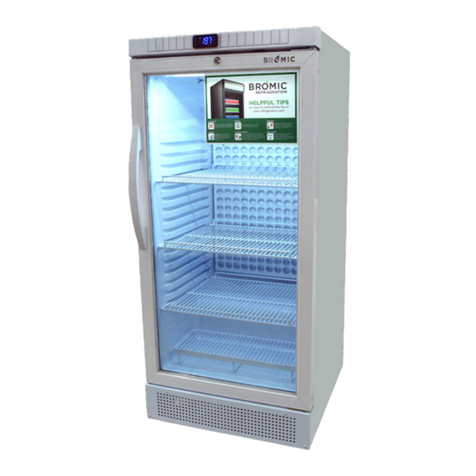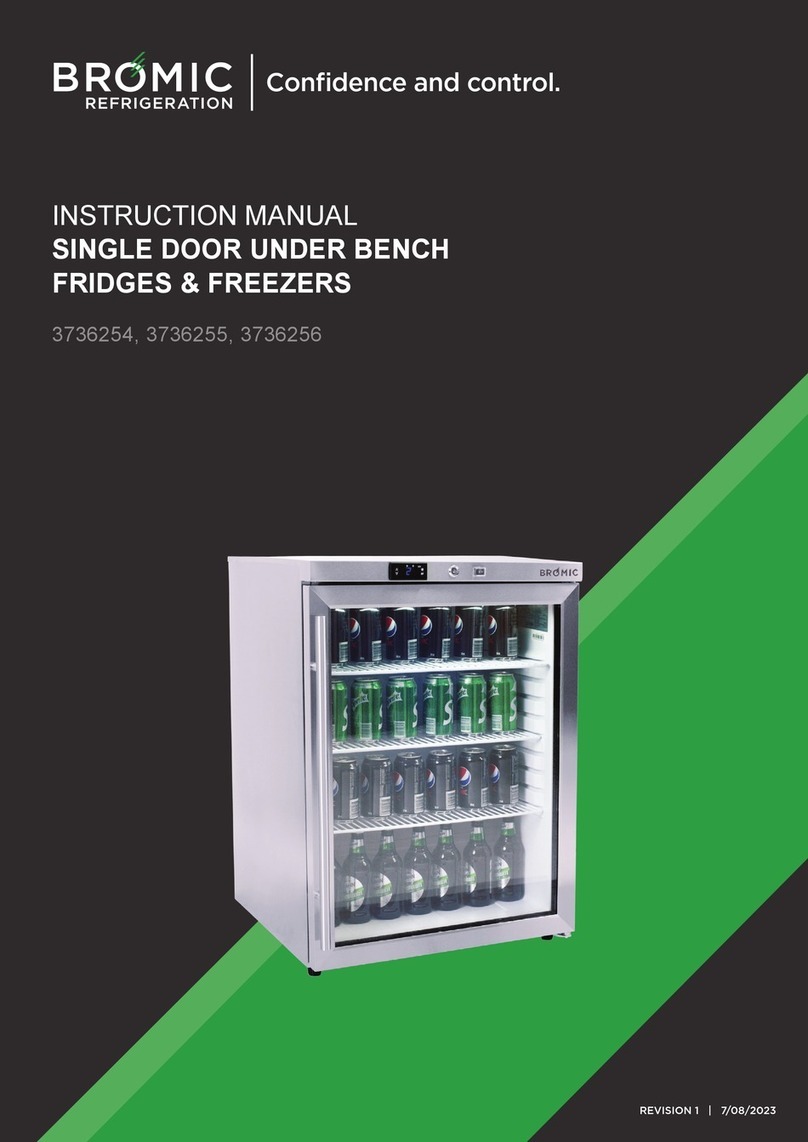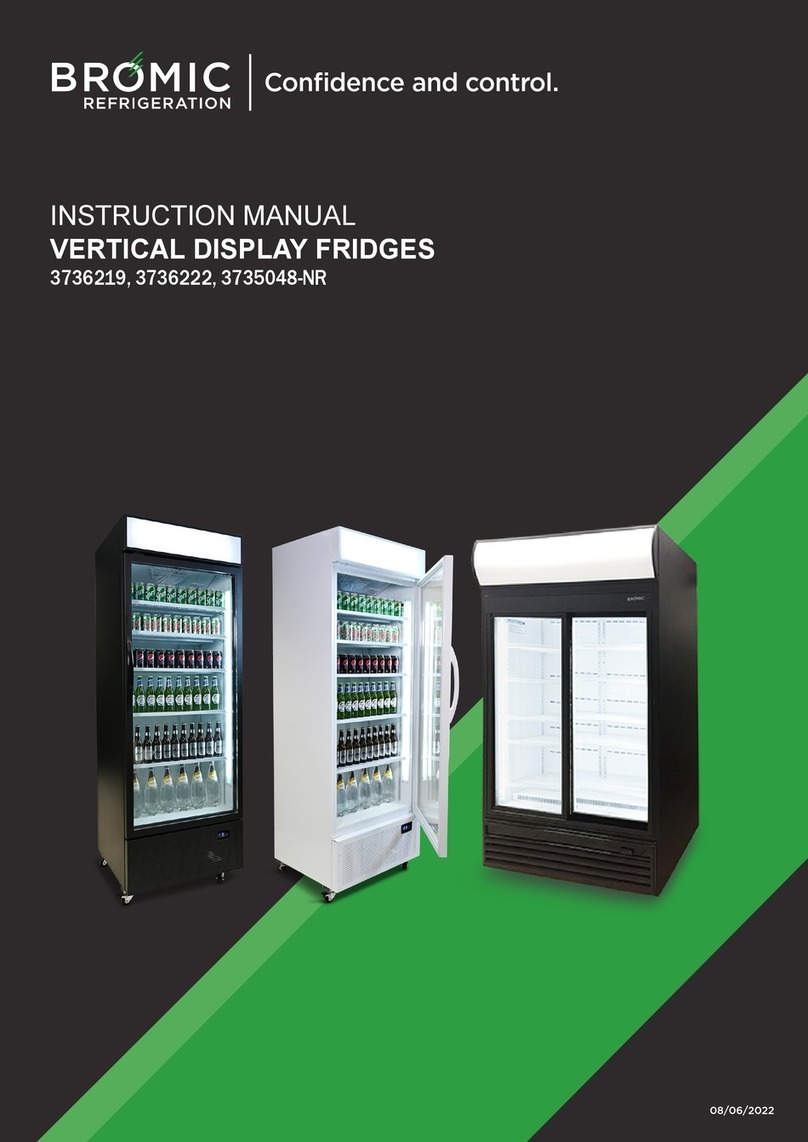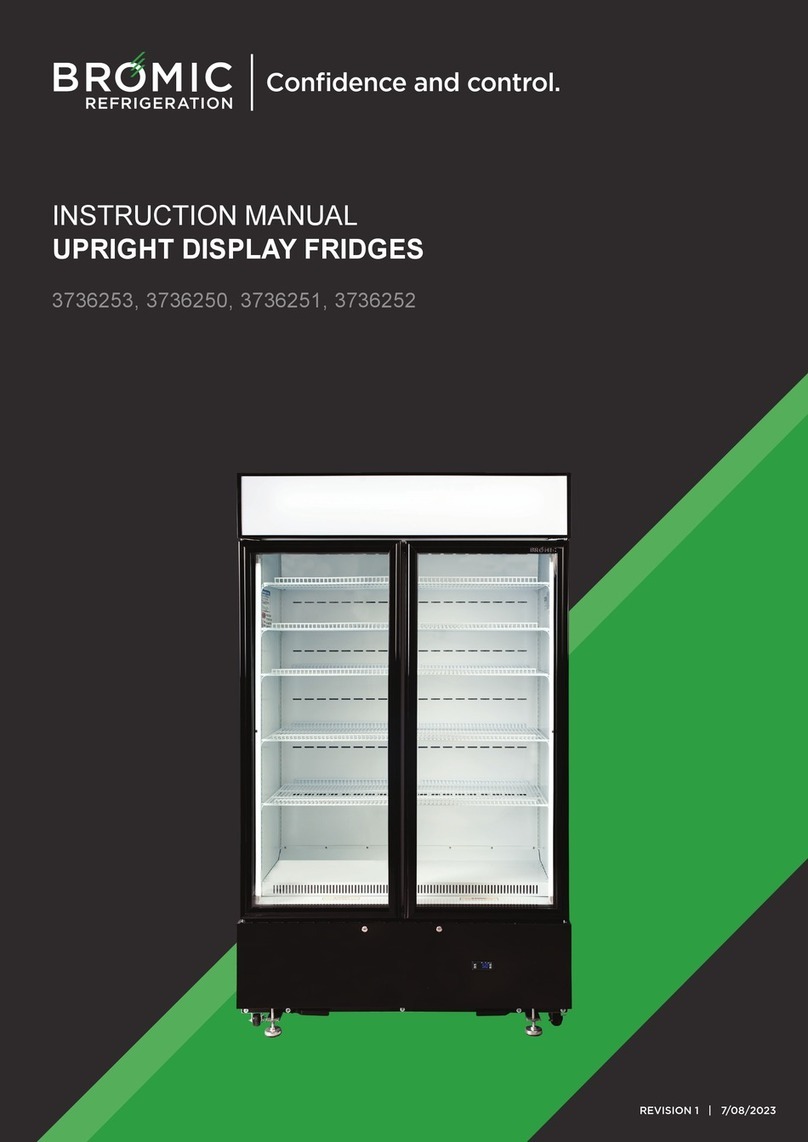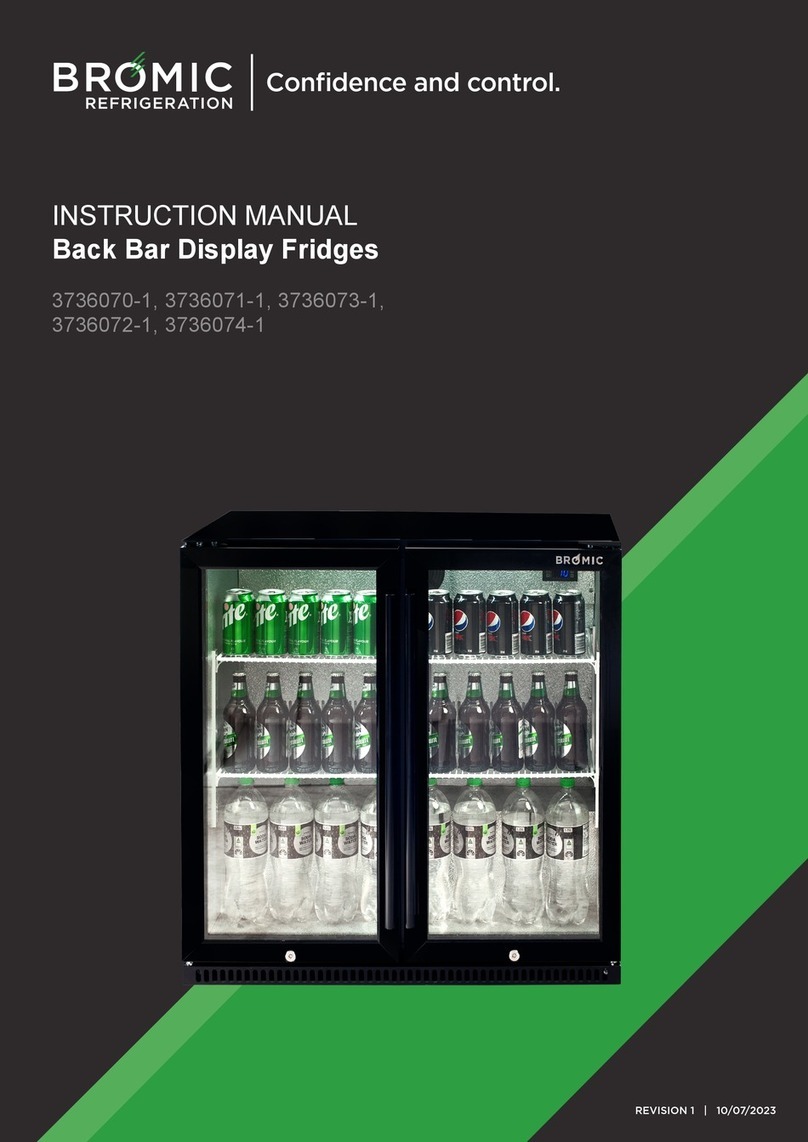•Protect foods and their odours by using some hermetic closing system, placing them in the unit in such a way that allows for a
good circulation of air, respecting the maximum load indicated on the inside of the unit.
•Avoid as far as possible the frequent opening of doors and above all, do not leave the doors open.
•Avoid placing sheets of cardboard or paper on the perforated shelves as these will obstruct the circulation of air.
•The maximum weight for glass shelf will is 8 kg/m, distributed evenly and 60kg/m for shelf exposure.
When the unit has to be turned off for a long period of time, the following steps are recommended.
•Remove the products from the inside of the unit.
•Disconnect the main switch and unplug the unit.
•Clean the inside and outside of the unit.
•Partially open the door so that air can circulate and in this way avoid foul odours.
7. PRECAUTIONS
•The stability of the unit is guaranteed, even when the doors are open, however leaning on the doors is completely prohibited.
•Do not modify the specifications plate or instructions issued by the manufacturer.
•Do not touch the unit with wet or damp hands and feet.
•Do not touch the unit when barefoot.
•Do not pull the cable to unplug the unit.
•Avoid the use of adapters, extension leads or multiple plugs.
•Before carrying out any cleaning or maintenance operation, unplug the unit from the electricity supply, first turning off the main
switch and then unplugging the unit.
•The unit must not be used by children, persons whose mental, sensory or physical capacities are impaired. Persons who lack
experience or knowledge must be supervised or given instructions for use.
•In those units equipped with metallic drawers, it is not advisable to load them with more than 30kg weight per drawer or 25kg in
plastic boxes, ensuring in all cases that the load is uniformly distributed. For this reason sitting or leaning on the drawers is not
allowed.
•Do not remove the protection from the movable components without having previously disconnected the power supply.
•Take necessary precautions before manipulating the condenser unit area, due to the existence of high temperatures of some of
the components and the resultant risk of burns.
8. MAINTENANCE
The units are equipped with a drainage outlet to make cleaning easier, as well as allowing for the eventual seepage of liquids from the foods.
During cleaning, the drainage outlet cover has to be removed and cleaned in order to avoid being blocked by solid elements being pulled into it.
The good operation and performance of the unit will largely depend on its correct maintenance, carried out periodically.
The manufacturer is exempt from all liability arising from non-compliance with the procedures contained in this manual.
•GAS CONDENSER
The incorrect maintenance and lack of cleaning of the gas condenser of the refrigerated unit can considerably reduce the performance of the
unit as well as shortening the life of the compressor motor. The cleaner the unit, especially the condenser fins, the greater the energy saving.
In any event, it is recommended that this task is carried out by a service technician. In the case of any doubt, please contact your distributor.
We recommend that this operation is carried out at least once every three months and at the start of every summer.
The cleaning of the gas condenser must be carried out with the unit unplugged and
removing the protectors (grills) or taking out the condenser unit (depending on the
model)
In order to remove the dirt deposited between the condenser fins, any of the
following procedures are recommended:
•Use a toothbrush or soft-bristle brush.
•Blow the dirt using a suitable appliance.
•Use air pressure to remove the dir.
Before carrying out any cleaning operation, disconnect the unit from the power supply and place the main
switch in the
OFF
position.
